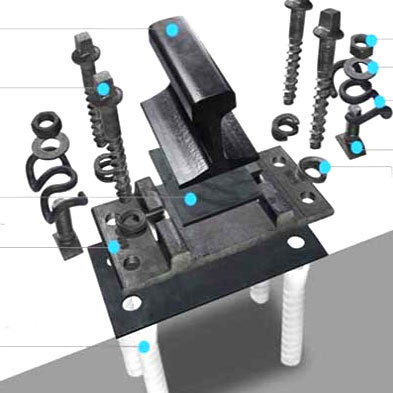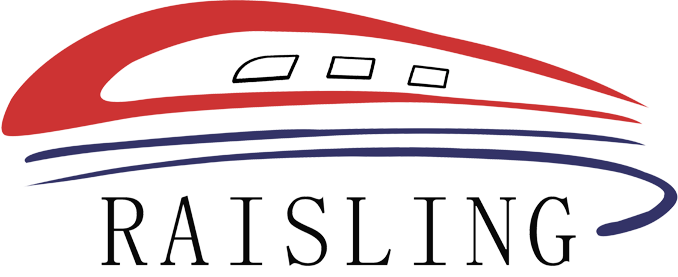-
ProductsAt present, the company has the ability to produce 50000 tons of rail buckle accessories annually. The product series includes various specifications of spring bars Gauge baffles, switch special pads, joint clamps for 43kg, 50kg, 60kg steel rails, various export products, etc

-

-
AboutThe company was established in 1994 and is a production enterprise specializing in the research and development, production, and sales of railway line specific accessories

Understanding Rail Fastening Systems: Essential Components for Rail Transportation
Jun 02,2025
Rail fastening systems are integral components of railway infrastructure, responsible for securing the rails to the sleepers and ensuring that the entire track system remains stable and operational. These systems play a pivotal role in maintaining the integrity of the railways, enabling safe and efficient transportation of goods and passengers. Understanding the various aspects of rail fastening s

At their core, rail fastening systems consist of a combination of clips, bolts, and other fastening elements that hold the rail in place. The primary purpose of these systems is to minimize movement of the rail under the pressure of passing trains, ensuring that the tracks remain aligned and secure. This stability is vital for maintaining the safety of train operations, especially at high speeds.
There are several types of rail fastening systems available, each designed for specific applications and track conditions. Some of the most common types include elastic clips, rigid clips, and screw spikes. Elastic clips are popular due to their ability to absorb shocks and vibrations, which can significantly prolong the lifespan of the track. Rigid clips, on the other hand, provide a more fixed connection and are often used in high-speed rail applications where stability is paramount. Screw spikes are traditional fastening methods that offer durability and are still in use in various rail installations.
The selection of an appropriate rail fastening system involves considering factors such as track type, vibration levels, and the specific conditions of the installation site. For instance, areas with heavy freight traffic may require more robust fastening solutions to withstand the increased load and stresses. Conversely, lighter systems might be suitable for suburban or light rail lines where loads are less intense.
In addition to their structural role, rail fastening systems contribute to the overall maintenance and operational efficiency of railway networks. Well-maintained fastening systems can reduce the frequency of track inspections and repairs, leading to cost savings in the long term. Furthermore, modern fastening solutions are designed with advanced materials that enhance their durability and performance, making them more resilient against environmental factors.
In conclusion, rail fastening systems are a vital component of railway infrastructure, ensuring safety and reliability in rail transportation. By understanding their types, functions, and benefits, industry professionals can make informed decisions about the best solutions for their specific needs, ultimately contributing to the effectiveness and efficiency of the rail network as a whole. Whether you are involved in design, maintenance, or operations, knowledge of rail fastening systems will undoubtedly enhance your expertise in the field.
Recommended
There is one sheet production line and two high-precision engraving machines, with an annual production capacity of 6 million railway special height adjustment pads.
Electrostatic spraying workshop
There is one electrostatic spray equipment production line and one spray paint production line, with an annual production capacity of 10,000 tons.
Contact Us
Henan Xinda Railway Equipment Co., Ltd
Fax: +86-372-2615999
Tel: +86-18567891234
Email:info@xindarail.com
Send us your request
we will get in touch with you as soon as possible
COOKIES
Our website uses cookies and similar technologies to personalize the advertising shown to you and to help you get the best experience on our website. For more information, see our Privacy & Cookie Policy
COOKIES
Our website uses cookies and similar technologies to personalize the advertising shown to you and to help you get the best experience on our website. For more information, see our Privacy & Cookie Policy
These cookies are necessary for basic functions such as payment. Standard cookies cannot be turned off and do not store any of your information.
These cookies collect information, such as how many people are using our site or which pages are popular, to help us improve the customer experience. Turning these cookies off will mean we can't collect information to improve your experience.
These cookies enable the website to provide enhanced functionality and personalization. They may be set by us or by third-party providers whose services we have added to our pages. If you do not allow these cookies, some or all of these services may not function properly.
These cookies help us understand what you are interested in so that we can show you relevant advertising on other websites. Turning these cookies off will mean we are unable to show you any personalized advertising.
COOKIES
Our website uses cookies and similar technologies to personalize the advertising shown to you and to help you get the best experience on our website. For more information, see our Privacy & Cookie Policy
COOKIES
Our website uses cookies and similar technologies to personalize the advertising shown to you and to help you get the best experience on our website. For more information, see our Privacy & Cookie Policy
These cookies are necessary for basic functions such as payment. Standard cookies cannot be turned off and do not store any of your information.
These cookies collect information, such as how many people are using our site or which pages are popular, to help us improve the customer experience. Turning these cookies off will mean we can't collect information to improve your experience.
These cookies enable the website to provide enhanced functionality and personalization. They may be set by us or by third-party providers whose services we have added to our pages. If you do not allow these cookies, some or all of these services may not function properly.
These cookies help us understand what you are interested in so that we can show you relevant advertising on other websites. Turning these cookies off will mean we are unable to show you any personalized advertising.

